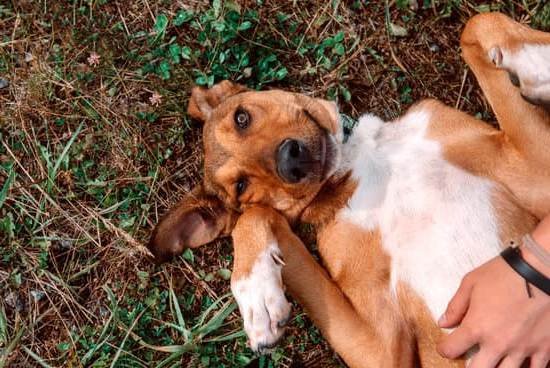Is it possible to train a 3-year-old dog? Many dog owners may wonder about the effectiveness of training an older canine companion. Training a 3-year-old dog presents unique challenges compared to training a young puppy, but with the right techniques and approach, it is indeed possible to teach an older dog new tricks.
When it comes to training a 3-year-old dog, understanding the age factor is crucial. Older dogs may have established behaviors and habits that need to be addressed through patient and consistent training methods. Assessing the current behavior and habits of your 3-year-old furry friend is essential in developing a customized training plan tailored to their specific needs.
The importance of patience and consistency cannot be emphasized enough when it comes to training an older dog. With the right techniques and strategies, such as positive reinforcement and reward-based training, you can effectively teach your 3-year-old dog new commands and behaviors. While there may be challenges and setbacks along the way, staying committed to the training process will yield positive results in the long run.
Understanding the Age Factor in Dog Training
Training a 3-year-old dog may seem daunting to some, but it is definitely possible with the right approach and understanding of the age factor in dog training. While it is true that older dogs may have established behaviors and habits, they are still capable of learning new things and adapting to training.
Understanding the age factor involves recognizing that just like humans, dogs also go through different stages of development throughout their lives. At three years old, a dog is considered an adult and may exhibit more maturity compared to a younger pup.
When training a 3-year-old dog, it is important to assess their current behavior and habits. This will give you an insight into what areas need improvement and what skills they already possess. By understanding their strengths and weaknesses, you can tailor your training approach to suit their individual needs.
Some common behaviors seen in older dogs include house training issues, leash pulling, or separation anxiety. Identifying these behaviors early on will allow you to address them effectively during the training process.
To successfully train a 3-year-old dog, patience and consistency are key factors. Older dogs may take longer to grasp new commands or behaviors compared to puppies, so it is essential to be patient and not get frustrated if progress seems slow.
Consistency in training methods and routines is also crucial for older dogs, as they thrive on predictability and structure. By setting clear expectations and enforcing rules consistently, you can help your 3-year-old dog understand what is expected of them during training sessions.
- Establish a regular training schedule
- Use positive reinforcement techniques such as treats or praise
- Focus on one command at a time to avoid overwhelming your dog
Assessing the Current Behavior and Habits of a 3-Year-Old Dog
When it comes to training a 3-year-old dog, one of the first steps is to assess its current behavior and habits. Dogs at this age have already established certain patterns and routines, so it is essential to understand where they are at in terms of behavior.
This assessment can help determine what areas need improvement and which behaviors are already well-established. By observing the dog’s actions, reactions, and overall demeanor, you can gain valuable insights into its personality and temperament.
Is It Possible to Change Existing Behavior?
Many pet owners wonder if it is possible to change existing behavior in a 3-year-old dog. The answer is yes, with patience, consistency, and the right training techniques, older dogs can learn new behaviors and unlearn unwanted ones.
While it may take more time and effort compared to training a puppy, it is definitely possible to modify behaviors in older dogs. Understanding the root cause of certain behaviors can also help in devising an effective training plan tailored to your dog’s needs.
Identifying Problematic Behaviors
During the assessment phase, pay close attention to any problematic behaviors that may need addressing. This could include issues like excessive barking, aggression towards other animals or people, separation anxiety, or destructive tendencies. By pinpointing these behaviors early on, you can focus your training efforts on correcting them and fostering more positive habits in your dog. Remember that every dog is unique, so understanding your pet’s individual challenges is key to successful training.
Overall, assessing the current behavior and habits of a 3-year-old dog sets the foundation for effective training strategies moving forward. With a clear understanding of where your dog stands behaviorally, you can tailor your training approach to address specific needs while building on existing strengths. Patience, consistency, and a deep bond with your furry companion are essential elements in achieving success in training a 3-year-old dog.
The Importance of Patience and Consistency in Training an Older Dog
Training a 3-year-old dog requires a different approach compared to training a younger puppy. At this age, dogs have already developed their habits and behaviors, making it essential for pet owners to have patience and consistency in their training methods. It is important to understand that older dogs may take longer to learn new commands or change their behavior, but with the right approach, it is definitely possible to train a 3-year-old dog effectively.
To successfully train an older dog, patience is key. It’s crucial for pet owners to remain calm and consistent in their training efforts, as getting frustrated or giving up easily can hinder progress. Establishing a routine and sticking to it can help the dog understand what is expected of them. Here are some tips on how to effectively train a 3-year-old dog:
- Set clear and achievable goals for training sessions
- Reward good behavior with treats or praise
- Use positive reinforcement techniques
- Be patient and avoid punishment for mistakes
Consistency is also vital in training an older dog. This means using the same commands, cues, and rewards each time. By being consistent, the dog will learn what is expected of them more quickly. It’s important to remember that every dog is different, so finding what works best for your furry companion may take some trial and error.
Techniques and Strategies for Training a 3-Year-Old Dog
Training a 3-year-old dog can be a rewarding experience with the right techniques and strategies. While some may believe that older dogs are set in their ways, it is possible to teach them new behaviors and commands through positive reinforcement and consistency. One important factor to consider when training an older dog is understanding their individual needs and capabilities.
It is essential to tailor the training methods to suit the personality and learning style of the 3-year-old dog. Some dogs may respond well to clicker training, while others may prefer verbal praise or treats as rewards. Consistency is key when working with an older dog, as they may take longer to grasp new concepts compared to younger puppies. By patiently repeating commands and rewarding good behavior, you can help your dog understand what is expected of them.
One effective strategy for training a 3-year-old dog is breaking down tasks into small, manageable steps. This approach helps prevent the dog from becoming overwhelmed and increases their chances of success. Additionally, incorporating regular exercise and mental stimulation into your dog’s routine can promote focus and engagement during training sessions. By using a combination of patience, positive reinforcement, and tailored strategies, it is indeed possible to train a 3-year-old dog successfully.
| Training Strategies | Key Points |
|---|---|
| Positive Reinforcement | Reward good behavior with treats or praise |
| Consistency | Repeat commands regularly and maintain a steady routine |
| Breaking Tasks Down | Divide training into small steps for easier comprehension |
Overcoming Challenges and Setbacks in Training
Training a 3-year-old dog comes with its own set of challenges and setbacks. While it is possible to train a dog at any age, older dogs may have developed certain behaviors or habits that could make training more difficult. However, with the right approach and techniques, these challenges can be overcome to ensure successful training.
Past Experiences
One of the challenges in training a 3-year-old dog is understanding their past experiences and how it may have shaped their behavior. Dogs may have been exposed to different environments, training methods, or interactions with humans that have influenced their current behavior. It is important to take these factors into consideration when implementing a training regimen for an older dog.
Behavior Modification
Another challenge in training an older dog is modifying existing behaviors that may be deeply ingrained. This could include behaviors like jumping on people, excessive barking, or leash pulling. Patience and consistency are key in addressing these behaviors, as it may take time for the dog to unlearn these habits and replace them with more desirable ones. Using positive reinforcement techniques can be particularly effective in encouraging good behavior.
Health Considerations
Age-related health issues can also pose challenges during training sessions. Older dogs may have limitations in terms of mobility or sensory functions that could impact their ability to learn new commands or tricks. It is important to consider these health considerations when designing a training program and adapt exercises accordingly to ensure the safety and comfort of the dog throughout the process.
Realistic Expectations for Training a Dog at This Age
Training a 3-year-old dog requires setting realistic expectations and understanding the challenges that may come with it. At this age, dogs are considered to be in their prime, both physically and mentally.
While it is possible to train a 3-year-old dog, it is essential to acknowledge that some habits may be more ingrained compared to training a younger puppy. However, with consistency, patience, and positive reinforcement, significant progress can still be made in terms of obedience and behavior.
One key factor to consider when training an older dog is the individual personality and history of the dog. Some 3-year-old dogs may have had previous training or experiences that affect their behavior, while others may be starting from scratch.
Assessing the current behavior and habits of the dog is crucial in tailoring a training plan that suits their needs and abilities. By taking into account their strengths and weaknesses, as well as any past traumas or triggers, trainers can better address specific issues during the training process.
When training a 3-year-old dog, it is important to remember that every dog is unique and may progress at their own pace. While some dogs may pick up commands quickly, others may take more time to understand and respond effectively.
Adjusting training techniques based on individual needs and providing consistent guidance will help foster positive results. It’s essential for trainers to celebrate small victories along the way and remain patient through any setbacks that may occur during the training process.
| Training Tips for Older Dogs | Key Points |
|---|---|
| Assess Your Dog’s Behavior | Understand your dog’s habits and triggers |
| Be Patient and Consistent | Consistency is key in training older dogs |
| Celebrate Small Victories | Positive reinforcement goes a long way in training |
Success Stories of Training Older Dogs
Training a 3-year-old dog may seem like a daunting task, especially if they have not received proper training in their earlier years. However, it is important to remember that age should not be a limiting factor when it comes to training dogs. With the right approach, dedication, and consistency, training a 3-year-old dog is definitely possible.
There are numerous success stories of older dogs being trained successfully, proving that age is not a barrier to learning new behaviors. One important aspect to consider when training an older dog is understanding their individual needs and capabilities. Different dogs may require different approaches based on their personality, breed, and past experiences. By tailoring the training methods to suit the specific needs of the dog, you can increase the chances of success.
One inspiring success story is about Max, a 3-year-old rescue dog who had never received any formal training before being adopted. Despite his age and initial behavioral issues, with patience, consistency, and positive reinforcement techniques, Max was able to learn basic commands and overcome his fear-based behaviors.
Through dedicated training sessions and building trust with his new owner, Max transformed into a well-behaved and obedient companion. This story serves as a testament to the fact that with the right approach and commitment, even older dogs can learn new tricks and behaviors.
Conclusion
Training a 3-year-old dog may present its unique challenges compared to training a younger pup, but with the right approach, patience, and consistency, it is absolutely possible to teach an older canine new tricks. The age factor in dog training should not discourage pet owners from investing time and effort into working with their furry companions.
Assessing the current behavior and habits of a 3-year-old dog is essential in developing a tailored training plan that addresses specific needs and areas for improvement.
The importance of patience and consistency cannot be overstated when it comes to training an older dog. While progress may be slower than with a younger dog, staying dedicated and sticking to a routine will yield positive results over time. Techniques such as positive reinforcement, clear communication, and understanding your dog’s individual motivations are key in effectively training a 3-year-old dog. Consistency in commands, rewards, and boundaries will help establish good behavior patterns and reinforce desired actions.
Overcoming challenges and setbacks in training is to be expected, but resilience and adaptability are crucial for success. Realistic expectations for training a dog at this age involve understanding that every dog learns at their own pace and may require different approaches.
By focusing on incremental progress, celebrating small victories, and maintaining a supportive environment during training sessions, pet owners can see significant improvements in their older dogs’ behavior and obedience. Ultimately, with dedication, perseverance, and the right approach, it is indeed possible to train a 3-year-old dog successfully.
Frequently Asked Questions
Is It Too Late to Train a 3 Year Old Dog?
It is not too late to train a 3-year-old dog. While older dogs may have already established habits, training can still be effective with patience and consistency. Positive reinforcement methods can help with behavior modification.
Can I Train My Dog After 3 Years?
Yes, you can train your dog after 3 years. Dogs of any age can learn new behaviors and skills through training. Consistency, positive reinforcement, and patience are key when working with an older dog to modify behaviors or teach new commands.
How Do You Train a 3 Year Old Dog?
Training a 3-year-old dog requires patience, consistency, and positive reinforcement. Start by establishing clear rules and boundaries for the dog to follow. Use treats or toys as rewards for good behavior and ignore or redirect undesired behavior.
Daily training sessions focusing on basic commands such as sit, stay, come, and leash walking can be beneficial in helping your older dog learn new skills. Remember to keep training sessions short and engaging to maintain their interest and motivation.

Welcome to the blog! I am a professional dog trainer and have been working with dogs for many years. In this blog, I will be discussing various topics related to dog training, including tips, tricks, and advice. I hope you find this information helpful and informative. Thanks for reading!





